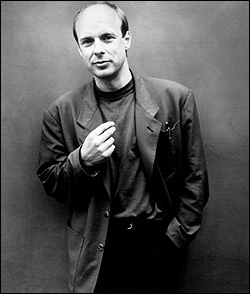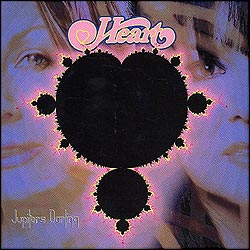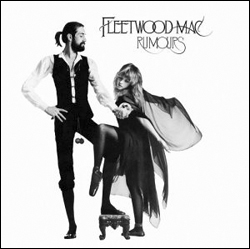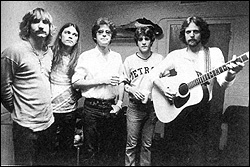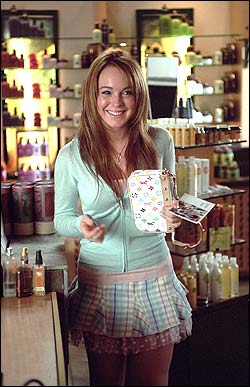Brian Eno started his career in Roxy Music, whose shtick was making music that was trippy without being psychedelic. They were into creating 3-D atmospheres instead of just ripping off Dylan and the Stones like other glitter bands did, even though (for the most part) “love” was the only “drug” Roxy explicitly mentioned, and they were ambivalent about that, as people with access to the supermodels on their album covers generally are. Eno, who left Roxy after their second album, got the idea for making his ambient albums, including the newly reissued Music for Films (1978), More Music for Films and Apollo: Atmospheres and Soundtracks (both 1983), and Thursday Afternoon (1985), while vegetating after a car accident that left him unable to get out of bed. In the mid-’70s, he invented a card game called Oblique Strategies, in which the cards were technical instructions chosen at random to follow while recording. This makes record production much easier. It’s like The Diceman, meaning the Luke Reinhardt book, not comedian Andrew “Dice” Clay.
Clay’s drug of choice was cigarettes, featured as a running joke in his film The Adventures of Ford Fairlane, in which a villain is set alight by a cancer stick. Music for Airports was designed to calm people down when they’re stuck in departure lounges, being forced to not smoke for hours. Thanks to this security bullshit, they don’t even let you bring lighters aboard planes, so even when you get off at the other end, you have to fuck around getting a cab into town before you can even spark up the thing, never mind trying to get a few hits off the pipe in the airline bathroom, which is absolutely necessary if you’re on a real long, boring ordeal flight like San Francisco to Oakland. Today’s tobacco totalitarianism has destroyed the culture of live music. Nobody focuses on the stage anymore—they’re getting up and walking outside every 10 minutes. It’s appropriate, then, that the idea of music as room deodorizer was invented by someone who, bedridden, never went out, just like everybody else who makes these stupid rules.
Roxy Music singer/jealous-guy Bryan Ferry’s ambition was to emulate the Velvet Underground’s White Light/White Heat, saying he wanted to complete an album in a single afternoon. The VU’s Lou Reed recorded an ambient album, Metal Machine Music, the liner notes of which insinuated that it was influenced by the effects of methamphetamine. Instead of crank, Clay used cigarettes and Eno used art. Art is less dangerous than drugs, which is why people get into it, but less successful when it comes to resolving the mind-body dialectic, which itself isn’t a problem, of course, when you’re confined to bed all day. Although if you’re in a hospital when that happens, you can just buzz the nurse and get whatever pills or injections you want. Shitting yourself with diarrhea? Get heroin. Constipated? Start tweaking hard. Insomniac from tweaking too much? Get one of these albums.
You won’t sleep, not least because all that dopamine activity won’t let you, and because except for the trancey Thursday Afternoon, they aren’t actually that static, at least not as much as Ferry’s later solo work, which had more of an emotional impact, if only for the unease caused by watching formerly hyperactive pop-art surrealists retreat into a Kaczynski/Huysmans netherworld transmitting fewer and fewer ominous drone chords, which lasted for longer and longer durations.
You might break the CD player by trying to put something else on when you forget that Music for Films is already playing. It isn’t that bad—more like side two of Bowie’s “Heroes,” except less murky and less Eurodisco. There are even some obtrusive moments: “Sparrowfall (3)” would work in a purgative-shower scene in a docudrama about roofies, and “M386” is still waiting for Afrika Bambaataa to discover its electro riff. On their way from turning the Talking Heads from Jonathan Richman into Spyro Gyra, David Byrne and Eno made My Life in the Bush of Ghosts, cited as innovative by Public Enemy producers the Bomb Squad, among others. What will happen when the crate-diggers discover Eno’s old band? (Well, Ice-T did sample “Amazona.”) Overall, Music for Films is like the spooky intro to Roxy Music songs such as “Strictly Confidential” or “Ladytron,” except not as good.
Apollo (not often mistaken for Live at the Apollo) has, like Led Zeppelin III, a first half of noises and a second half of Sheryl Crow guitar music, like “Deep Blue Day,” from the Trainspotting scene when the guy dives into the toilet to retrieve some heroin and goes on an underwater journey. (That film was at least watchable, unlike Velvet Goldmine, where Eno’s pop songs went, and weren’t enough to save it.) Eno (and Ferry) did alt-country better than anyone—Roxy’s “If There Is Something” (not to mention “Prairie Rose”) made Wilco unnecessary decades before the oblique, strategic Being There emerged as the American Joshua Tree, if not the stateside Ultravox!
From Thursday Afternoon‘s liner notes by C.S.J. Bofop (which sounds more like an anagram than a real name): “Perhaps, then, they should be seen as more closely related to painting than any traditional notion of music.” Kind of says it all, really. So if you’ve got a painting on your wall, then crank this up and you’ll have two! Or better yet, just look out the window. A scary thought: If people were as disengaged with what’s outside their own windows as Eno wants them to be with his music, we’d be living in a less-than-perfect world!
Which brings us to the favorite complaint of the last remaining modernists—is emotional engagement with an Eno song possible? (That includes even straightforward stuff like “Baby’s on Fire” or “Third Uncle.”) Maybe the Oblique Strategy he used on these albums was: “Make something whose total use-value will be determined by random associations, and ensure there will be some of those, by having the creator also produce bands and theories to amass the kind of credibility that leads to coveted soundtrack placements.” As with most innovations, this one was designed with a sadly overoptimistic underestimation of how badly most people want their selection of available environments to be as alike as possible. Before science there were pop songs, and after science there are coffee-shop compilations. Now there’s a new sensation!
